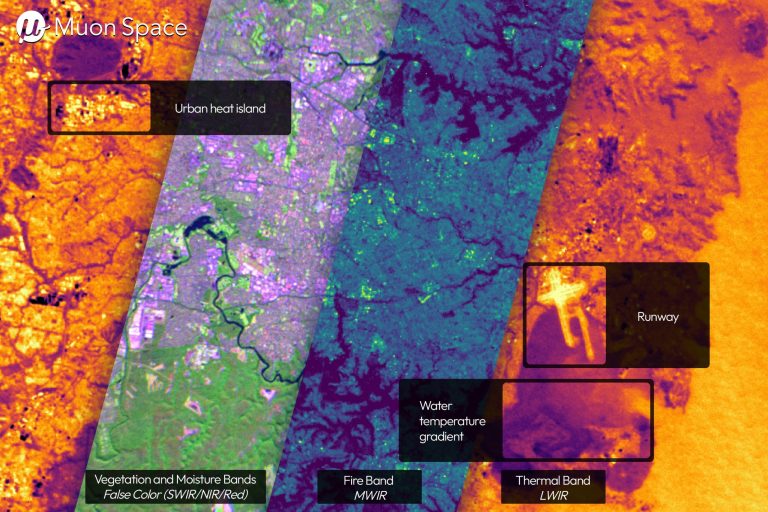WASHINGTON — Muon Space has released the first thermal infrared images from its FireSat Protoflight satellite, marking a milestone for the company’s dedicated wildfire detection constellation. The images, captured using a six-channel multispectral infrared instrument, demonstrate the satellite’s ability to detect and measure thermal signatures from space.
The satellite, built by the California-based startup Muon Space, launched March 14 aboard SpaceX’s Transporter-13 mission. The first light images show urban heat islands and airport runway activity in Sydney, Australia; lava fountains at Hawaii’s Kīlauea volcano; and gas flares at Libya’s Sarir oil field complex.
“These first light images confirm that our IR sensors are operating as designed and collecting high-quality data,” said Dan McCleese, chief scientist of Muon Space.
Unlike visual cameras, the FireSat sensor sees heat. Every pixel in the image corresponds to a temperature reading on the ground. That allows it to detect everything from subtle shifts in water temperature to the roaring heat of active volcanoes — and crucially, the telltale signs of an emerging wildfire.

The FireSat initiative is led by the nonprofit Earth Fire Alliance (EFA) in partnership with Muon Space, with financial support from Google Research, the Gordon & Betty Moore Foundation, and other environmental organizations.
Three additional satellites are scheduled for launch in 2026, with plans to build a constellation of more than 50 satellites by 2030.
The goal is to be able to observe every point on Earth at least twice daily, with wildfire-prone regions receiving more frequent coverage. At full operational capacity, the satellites would provide 20-minute revisit times globally.
The FireSat constellation seeks to address limitations in current wildfire detection methods, which typically rely on ground reports, aircraft patrols, or general-purpose satellites with limited temporal and spatial resolution. The constellation will serve first responders, land management agencies and research institutions studying fire behavior and climate impacts.

